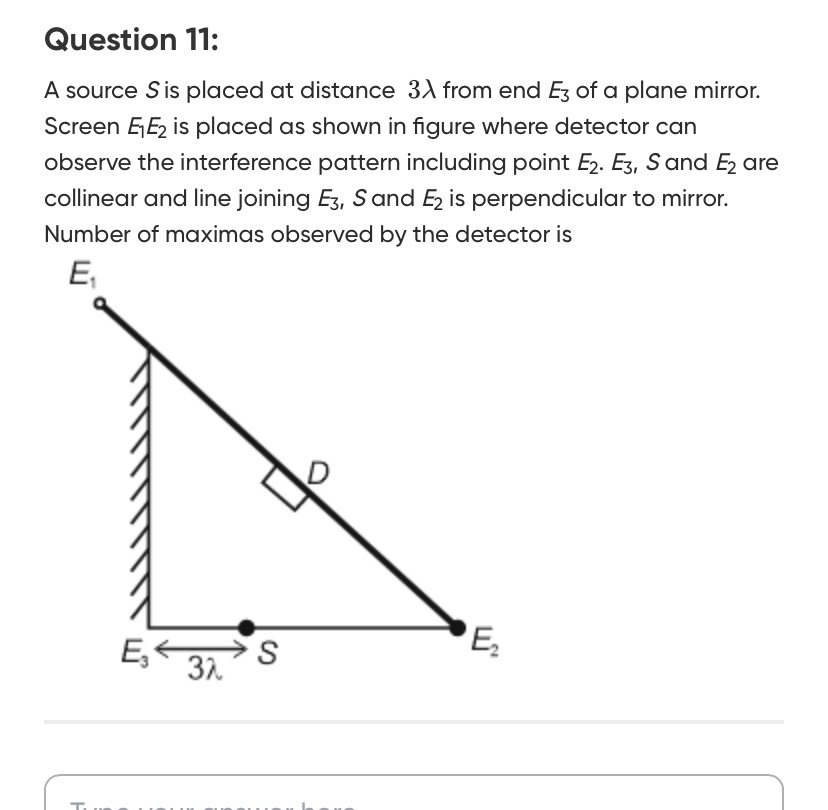Question
Question: A source S is placed at distance 3λ from end E₃ of a plane mirror. Screen E₁E₂ is placed as shown in...
A source S is placed at distance 3λ from end E₃ of a plane mirror. Screen E₁E₂ is placed as shown in figure where detector can observe the interference pattern including point E₂. E₃, S and E₂ are collinear and line joining E₃, S and E₂ is perpendicular to mirror. Number of maximas observed by the detector is

7
Solution
The setup involves interference between waves from a source S and its image S' formed by the plane mirror. Let the mirror be along the y-axis and the line E₃SE₂ along the x-axis. Let E₃ be at the origin (0,0). Then S is at (3λ, 0). The image S' is at (-3λ, 0). The screen is the line segment E₁E₂. Point E₂ is on the x-axis at some position L, where L > 3λ. Point E₁ is above E₃.
At point E₂, which is on the x-axis at x=L, the path difference Δr is the difference between the distance from S' to E₂ and the distance from S to E₂. PS′=(L−(−3λ))2+02=(L+3λ)2=L+3λ (since L > 3λ) PS=(L−3λ)2+02=L−3λ (since L > 3λ) ΔrE2=PS′−PS=(L+3λ)−(L−3λ)=6λ. For maxima, Δr=nλ. So, at E₂, nλ=6λ, which means n=6.
At point E₁, which is directly above E₃ (let's assume its coordinates are (0, h) for some height h), the path difference is: PS′=(0−(−3λ))2+h2=(3λ)2+h2 PS=(0−3λ)2+h2=(−3λ)2+h2=(3λ)2+h2 ΔrE1=PS′−PS=0. For maxima, Δr=nλ. So, at E₁, nλ=0, which means n=0.
The detector observes the interference pattern along the screen E₁E₂. The path difference varies from 0 at E₁ to 6λ at E₂. The number of maxima corresponds to the integer values of n in the range [0, 6]. These values are 0, 1, 2, 3, 4, 5, 6. Therefore, there are a total of 7 maxima observed.
